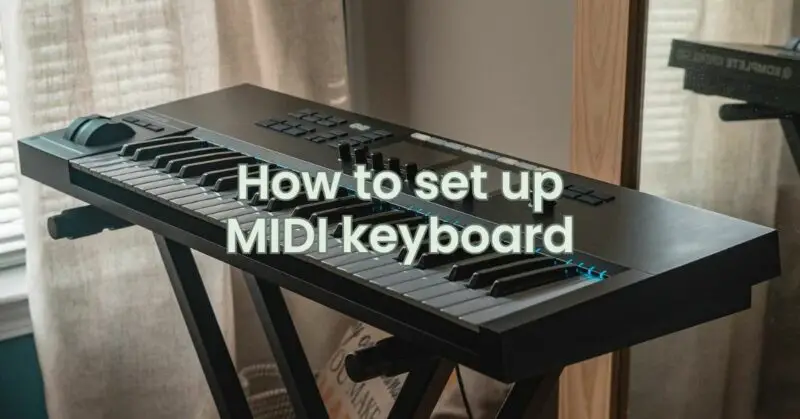Setting up a MIDI keyboard is an essential step for musicians and music producers looking to unleash their creative potential in the digital realm. A MIDI keyboard allows you to control virtual instruments, trigger sounds, and record performances in your favorite music production software. Whether you’re a beginner or an experienced musician, this step-by-step guide will walk you through the process of setting up your MIDI keyboard and getting ready to make music.
Step 1: Choose the Right MIDI Keyboard:
Before diving into the setup process, ensure you have the right MIDI keyboard for your needs. Consider factors like the number of keys, key size, additional features (such as drum pads or assignable knobs), and compatibility with your computer or device.
Step 2: Connect the MIDI Keyboard:
- MIDI Connection: Most MIDI keyboards connect via USB, so plug one end of the USB cable into your MIDI keyboard and the other end into an available USB port on your computer.
- Power: MIDI keyboards often draw power from the USB connection, so you generally don’t need an additional power supply. However, if your MIDI keyboard requires one, connect it to a power source.
Step 3: Install Drivers (If Necessary):
For USB MIDI keyboards, your computer should automatically recognize and install the necessary drivers. However, if your MIDI keyboard requires specific drivers for proper functionality, install them following the manufacturer’s instructions.
Step 4: Enable MIDI in Your Music Production Software:
Open your preferred music production software (DAW) on your computer. In the software settings or preferences, ensure that MIDI input is enabled. Different DAWs have different methods for enabling MIDI, so refer to your DAW’s user manual or online tutorials if needed.
Step 5: Select the MIDI Keyboard as the Input Device:
In your DAW, go to the MIDI settings or preferences and select your MIDI keyboard as the input device. This tells the software to recognize and receive MIDI data from your keyboard.
Step 6: Test the MIDI Connection:
To check if your MIDI keyboard is properly set up, create a new MIDI track in your DAW and record-enable it. Press a few keys on your MIDI keyboard, and you should see MIDI data being recorded in the track. Additionally, you should hear sound if you have a virtual instrument or synthesizer loaded on the track.
Step 7: Assigning Controls (Optional):
If your MIDI keyboard has assignable knobs, sliders, or buttons, you can customize their functions within your DAW. This allows you to control various parameters in software instruments or effects. Refer to your DAW’s manual for instructions on how to assign MIDI controls.
Step 8: Adjust MIDI Keyboard Settings:
Many MIDI keyboards allow you to customize settings like velocity sensitivity, octave shift, and more. Refer to your MIDI keyboard’s user manual to explore and adjust these settings according to your preferences.
Step 9: Practice and Explore:
Now that your MIDI keyboard is set up and working, it’s time to practice, explore, and unleash your creativity. Experiment with different virtual instruments, record melodies, and try out various music production techniques. The more you practice, the more proficient you’ll become in using your MIDI keyboard to create captivating music.
Conclusion:
Setting up a MIDI keyboard is a simple and rewarding process that opens up a world of possibilities in music production. By following this step-by-step guide and familiarizing yourself with your MIDI keyboard and music production software, you’ll be well on your way to composing, producing, and performing music with ease. So, plug in your MIDI keyboard, let your creativity flow, and embark on an exciting journey of musical exploration and expression.


